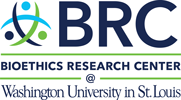Title: High-Risk Genetic Therapy Best Done on Minors?
Author: Adrienne Carpenter
Description: Minors seem to be the prime candidates in testing a treating for Leber’s congenital amauerosis, despite the high-risk level of the study. A potential scientific breakthrough is weighed against the safety of the child.
Keyword(s): gene transfer research, phase I study, minors, parental permission, assent, questionable risk-benefit assessment, unknown or unusually high risk, medically vulnerable person
Based On: (Bainbridge, 2007)
Case: Dr. Mays is a doctor of ophthalmology interested in the medical potential of gene transfer to treat Leber’s congenital amaurosis (LC). LCA is a degenerative retinal disorder. Patients have very poor vision at birth and can suffer a number of other effects from the condition. Dr. Mays is proposing a Phase I clinical trial using gene transfer to treat LCA. LCA is a particularly good candidate for gene transfer because of location and type of genetic defect involved as well as the fact that the condition is degenerative and there is no known effective therapy.
Pre-clinical data suggest that the proposed transfer will likely be most–if not exclusively–effective in patients who have not yet experienced significant degeneration of the retina. Younger patients are the best candidates for the purpose of assessing efficacy. However, enrollment in the study would pose a significant risk, due to the novelty of the intervention. The study can be conducted on healthy adults, but they would very likely not benefit from the gene transfer, due to the advancement of retinal damage.
- Who should be the first subjects in this research? Why? What factors should be considered in making this decision?
- When is it ethically justifiable to enroll children in research studies involving novel therapies or treatments? Is it ethical in this scenario?
Source: Bainbridge, J. (2007). Gene therapy clinical trials for inherited eye disease. Expert Review of Ophthalmology, 2(4), 517-519

